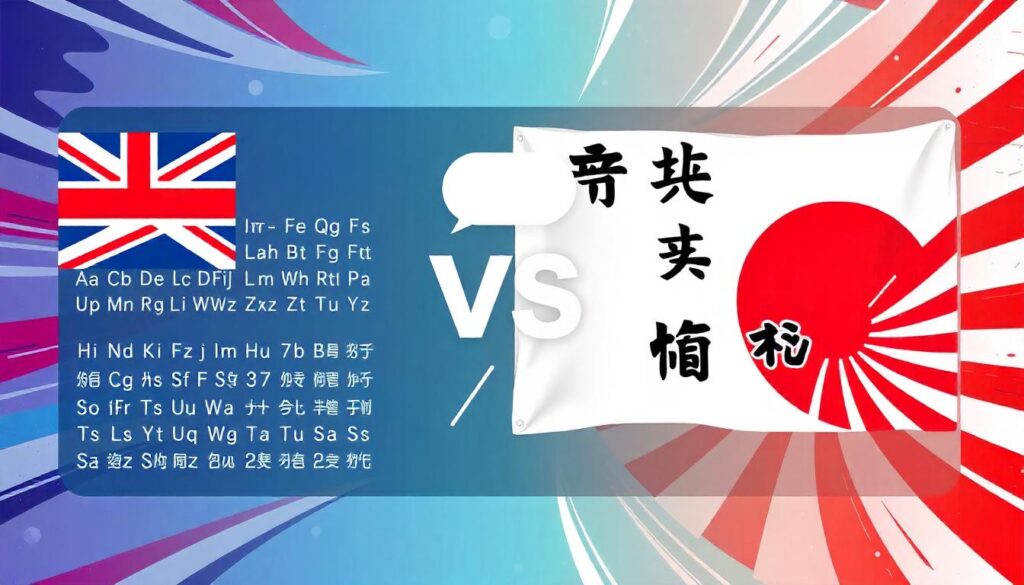Understanding the Differences Between English and Japanese Sounds
When learning English as a Japanese speaker, one of the most challenging aspects is the difference in sounds between the two languages. English and Japanese have distinct phonetic systems, and this can make it tricky to pronounce English words correctly. Let’s take a closer look at some key differences between English and Japanese sounds, and how understanding these differences can improve your pronunciation.

1. Consonant Sounds: A Key Difference
One of the most noticeable differences between English and Japanese is the variety of consonant sounds. Japanese has fewer consonant sounds than English, which means certain English sounds don’t exist in Japanese at all. Here are a few key examples:
The “th” Sounds (/θ/ and /ð/)
In English, we have two “th” sounds: the voiceless /θ/ sound, like in the word think, and the voiced /ð/ sound, like in this. However, Japanese does not have these sounds. Instead, Japanese speakers often substitute the “th” sound with /s/ or /z/, which can lead to mispronunciations like sink instead of think, or zis instead of this.
To pronounce the “th” sound correctly, try placing your tongue between your teeth and blowing air out for the voiceless /θ/, or vibrating your vocal cords for the voiced /ð/.
The /r/ vs. /l/ Sounds
The Japanese language has a single sound, represented by the “r” character, that is somewhere between the English /r/ and /l/. In English, the /r/ sound is pronounced with the tongue curled up toward the roof of the mouth (as in red), while the /l/ sound is produced by placing the tongue against the roof of the mouth (as in lake). Many Japanese speakers have difficulty distinguishing between these two sounds, often saying something like wrel instead of well or rack instead of lack.
The key to mastering this distinction is to pay attention to the tongue position: for /r/, the tongue is pulled back, and for /l/, it touches the roof of the mouth.
The “f” and “v” Sounds
In English, we have the /f/ sound (as in fish) and the /v/ sound (as in very). Japanese speakers may find these sounds difficult because the Japanese language only has the /f/ sound, which is made by biting the lower lip and blowing air. The /v/ sound does not exist in Japanese, so it’s often replaced by the /b/ sound. This can result in mispronunciations like berry instead of very.
To make the /v/ sound, try gently biting your upper teeth with your lower lip and voicing it out.
2. Vowel Sounds: More Variety in English
Japanese vowels are relatively simple, with only five distinct vowel sounds: /a/, /i/, /u/, /e/, and /o/. These vowels are short and pure, and each one is pronounced clearly without any diphthongs (combinations of two vowel sounds). In contrast, English has many more vowel sounds, including diphthongs, which can make English pronunciation tricky for Japanese speakers.
Diphthongs in English
English has several diphthongs, like in the words coin (/ɔɪ/) and out (/aʊ/). These are combinations of two vowel sounds pronounced in one syllable. In Japanese, each vowel is pronounced separately, so it’s difficult for Japanese speakers to master these combined sounds. For example, in English, coin sounds like koyn, but in Japanese, it might be pronounced with separate vowel sounds, ko-i-n.
To pronounce diphthongs, focus on blending the two vowel sounds smoothly. For example, in out, start with the “ah” sound and smoothly transition to the “oo” sound.
The /æ/ Sound
In English, the /æ/ sound, as in cat, is common in many words, but this sound does not exist in Japanese. Japanese speakers may pronounce it as a simple /a/ sound, resulting in a mispronunciation like cot instead of cat.
To produce the /æ/ sound, open your mouth wider than for the /a/ sound, and make sure the tongue is in a low position in the mouth.
English Pronunciation Course for Non-Native Speakers: Learn Proven Strategies to Improve Your Accent, Speak Clearly, and Boost Your Confidence – Click Here to Enroll Now!
3. Pitch and Intonation
While both English and Japanese are tonal languages, the way pitch is used in both languages is quite different. In Japanese, pitch accent plays a significant role in distinguishing words, but the overall intonation is relatively flat, especially when compared to English. English has a more varied intonation pattern, using rises and falls in pitch to express meaning, emotion, and emphasis.
For example, in English, the sentence I’m going to the store can have different meanings depending on the intonation: rising intonation at the end suggests a question, while falling intonation suggests a statement. In Japanese, pitch is more often used to distinguish between words (like hashi meaning “chopsticks” vs. hashi meaning “bridge”) rather than to convey different sentence meanings.
To improve your English pronunciation, practice listening to native speakers and mimicking their intonation patterns. This will help you sound more natural and understand the rhythm of English.
4. Final Thoughts: Overcoming Sound Differences
As a Japanese speaker, understanding the differences between English and Japanese sounds is crucial to improving your pronunciation. English has more complex consonant and vowel sounds, as well as varied intonation patterns that can make communication more challenging. However, with regular practice, you can overcome these challenges and improve your pronunciation.
Start by focusing on individual sounds that differ between English and Japanese, such as the “th” and “r/l” sounds. Listen carefully to native speakers, imitate their pronunciation, and don’t be afraid to make mistakes. With time and effort, you will find that your ability to speak English clearly and confidently will improve, opening up new opportunities for communication in both personal and professional settings. Happy practicing!














Leave A Comment